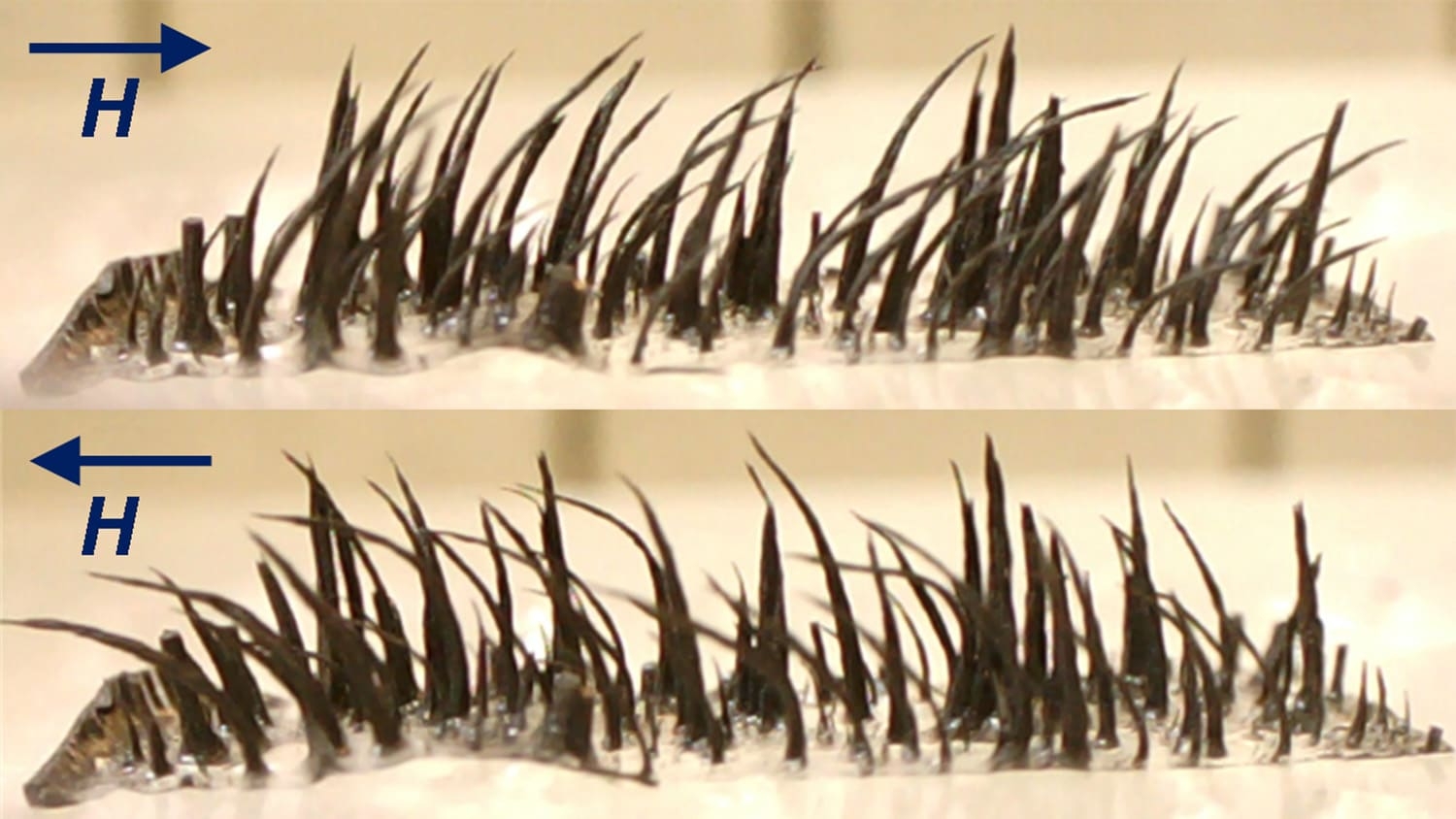Autonomous lab discovers best-in-class quantum dot in hours; it would have taken humans years

It can take years of focused laboratory work to determine how to make the highest quality materials for use in electronic and photonic devices. Researchers have now developed an autonomous system that can identify how to synthesize “best-in-class” materials for specific applications in hours or days.
The new system, called SmartDope, was developed to address a longstanding challenge regarding enhancing properties of materials called perovskite quantum dots via “doping.”
“These doped quantum dots are semiconductor nanocrystals that you have introduced specific impurities to in a targeted way, which alters their optical and physicochemical properties,” explains Milad Abolhasani, corresponding author of a paper on SmartDope and an associate professor of chemical engineering at North Carolina State University.
“These particular quantum dots are of interest because they hold promise for next generation photovoltaic devices and other photonic and optoelectronic devices,” Abolhasani says. “For example, they could be used to improve the efficiency of solar cells, because they can absorb wavelengths of UV light that solar cells don’t absorb efficiently and convert them into wavelengths of light that solar cells are very efficient at converting into electricity.”
However, while these materials are very promising, there’s been a challenge in developing ways to synthesize quantum dots of the highest possible quality in order to maximize their efficiency at converting UV light into the desired wavelengths of light.
“We had a simple question,” Abolhasani says. “What’s the best possible doped quantum dot for this application? But answering that question using conventional techniques could take 10 years. So, we developed an autonomous lab that allows us to answer that question in hours.”
The SmartDope system is a “self-driving” lab. To begin, the researchers tell SmartDope which precursor chemicals to work with and give it a designated goal. The goal in this study was to find the doped perovskite quantum dot with the highest “quantum yield,” or the highest ratio of photons the quantum dot emits (as infrared or visible wavelengths of light) relative to the photons it absorbs (via UV light).
Once it has received that initial information, SmartDope begins running experiments autonomously. The experiments are conducted in a continuous flow reactor that uses extremely small amounts of chemicals to conduct quantum dot synthesis experiments rapidly as the precursors flow through the system and react with each other. For each experiment, SmartDope manipulates a suite of variables, such as: the relative amounts of each precursor material; the temperature at which it mixes those precursors; and the amount of reaction time given whenever new precursors are added. SmartDope also characterizes the optical properties of the quantum dots produced by each experiment automatically as they leave the flow reactor.
“As SmartDope collects data on each of its experiments, it uses machine learning to update its understanding of the doped quantum dot synthesis chemistry and inform which experiment to run next, with the goal of making the best quantum dot possible,” Abolhasani says. “The process of automated quantum dot synthesis in a flow reactor, characterization, updating the machine learning model, and next-experiment selection is called closed-loop operation.”
So, how well does SmartDope work?
“The previous record for quantum yield in this class of doped quantum dots was 130% – meaning the quantum dot emitted 1.3 photons for every photon it absorbed,” Abolhasani says. “Within one day of running SmartDope, we identified a route for synthesizing doped quantum dots that produced a quantum yield of 158%. That’s a significant advance, which would take years to find using traditional experimental techniques. We found a best-in-class solution for this material in one day.
“This work showcases the power of self-driving labs using flow reactors to rapidly find solutions in chemical and material sciences,” Abolhasani says. “We’re currently working on some exciting ways to move this work forward and are also open to working with industry partners.”
The paper, “Smart Dope: A Self-Driving Fluidic Lab for Accelerated Development of Doped Perovskite Quantum Dots,” is published open access in the journal Advanced Energy Materials. The co-first authors of the paper are Fazel Bateni and Sina Sadeghi, Ph.D. students at NC State. The paper was co-authored by Negin Orouji and Michael Rosko, Ph.D. students at NC State; Jeffrey Bennett, a postdoctoral researcher at NC State; Venkat Punati, a master’s student at NC State; Christine Stark, an undergraduate at NC State; Felix Castellano, Goodnight Innovation Distinguished Chair in Chemistry at NC State; Junyu Wang and Ou Chen of Brown University; and Kristofer Reyes of the University at Buffalo.
The work was done with support from the National Science Foundation under grant number 1940959; the UNC Research Opportunities Initiative; and the Dreyfus Program for Machine Learning in the Chemical Sciences and Engineering, under award number ML-21-064.
-shipman-
Note to Editors: The study abstract follows.
“Smart Dope: A Self-Driving Fluidic Lab for Accelerated Development of Doped Perovskite Quantum Dots”
Authors: Fazel Bateni, Sina Sadeghi, Negin Orouji, Jeffrey A. Bennett, Venkat S. Punati, Christine Stark, Milad Abolhasani, Michael C. Rosko and Felix N. Castellano, North Carolina State University; Junyu Wang and Ou Chen, Brown University; and Kristofer G. Reyes, University at Buffalo
Published: Nov. 12, Advanced Energy Materials
DOI: 10.1002/aenm.202302303
Abstract: Metal cation-doped lead halide perovskite (LHP) quantum dots (QDs) with photoluminescence quantum yields (PLQYs) higher than unity, due to quantum cutting phenomena, are an important building block of the next-generation renewable energy technologies. However, synthetic route exploration and development of the highest-performing QDs for device applications remain challenging. In this work, we present Smart Dope, which is a self-driving fluidic lab (SDFL), for the accelerated synthesis space exploration and autonomous optimization of LHP QDs. Specifically, we focus on multi-cation doping of CsPbCl3 QDs using a one-pot high-temperature synthesis chemistry. Smart Dope continuously synthesizes multi-cation-doped CsPbCl3 QDs using a high-pressure gas-liquid segmented flow format to enable continuous experimentation with minimal experimental noise at reaction temperatures up to 255°C. Smart Dope offers multiple functionalities, including accelerated mechanistic studies through digital twin QD synthesis modeling, closed-loop autonomous optimization for accelerated QD synthetic route discovery, and on-demand continuous manufacturing of high-performing QDs. Through these developments, Smart Dope autonomously identifies the optimal synthetic route of Mn-Yb co-doped CsPbCl3 QDs with a PLQY of 158%, which is the highest reported value for this class of QDs to date. Smart Dope illustrates the power of SDFLs in accelerating the discovery and development of emerging advanced energy materials.
This post was originally published in NC State News.
- Categories:


